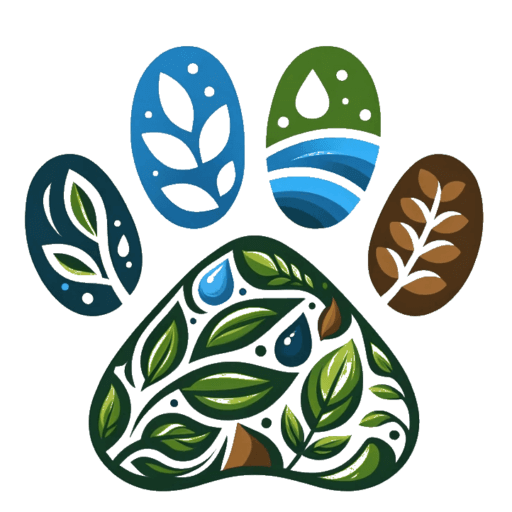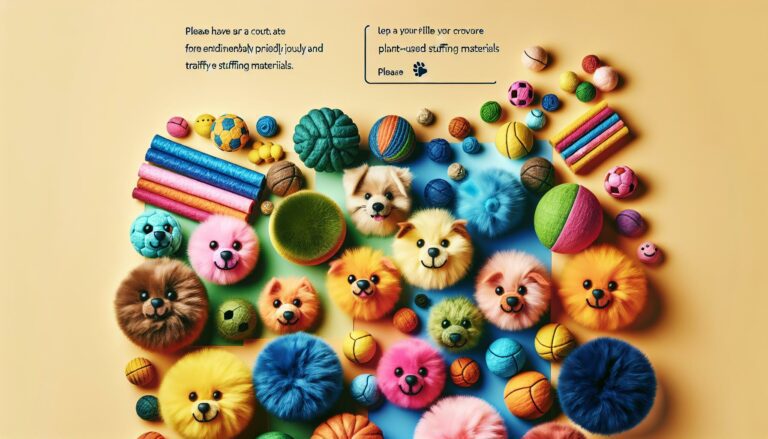Toys are a staple in the lives of our beloved pets, providing them with entertainment, mental stimulation, and comfort. As pet owners, we are constantly on the lookout for the perfect toy that is safe for our pets and gentle on the planet. Among the flurry of options available, kapok-stuffed pet toys have emerged as a sustainable and planet-friendly choice that offer both durability and eco-consciousness.
Why Kapok Makes a Superior Pet Toy Filling
Kapok is a natural, plant-based fiber obtained from the seed pods of the kapok tree (Ceiba pentandra). The silky fibers are known for their lightness and buoyancy, which makes them an excellent filling for pet toys. So, what sets kapok apart from other fillings, like synthetic fibers or cotton?
- Hypoallergenic Properties: Kapok is a hypoallergenic material, making it an ideal option for pets with allergies or sensitivities to synthetic materials.
- Soft and Cuddly: The inherent softness of kapok provides a snug and cuddly texture, which pets find comforting and engaging.
- Water-Resistant: Thanks to its waxy coating, kapok naturally repels water, meaning toys stuffed with it dry faster and are less prone to developing mold or mildew.
- Sustainability: Kapok trees grow naturally and prolifically in their native environments, which means harvesting kapok doesn’t require pesticides or large-scale farming practices.
- Biodegradable: Being a natural fiber, kapok is fully biodegradable, breaking down into the environment without leaving any toxic residues.
The Environmental Impact of Kapok
The environmental footprint of pet products is a growing concern among conscientious pet owners. In the era of climate change and ecological decline, choosing pet toys filled with kapok aligns with a planet-friendly lifestyle.
Sustainability
Kapok trees are robust and do not demand artificial irrigation, making them highly sustainable. These trees also play a role in supporting rainforest ecosystems by providing habitats for a variety of wildlife.
Zero Waste Philosophy
Choosing kapok furthers a zero waste philosophy. Since kapok trees don’t need to be cut down for fiber harvesting — the kapok is collected from fallen pods — this ensures that the tree continues to thrive and contribute to carbon sequestration.
Chemical-Free Cultivation
Unlike cotton or synthetic fillings that often rely on intensive farming and petrochemical industries, respectively, kapok is free from such dependencies. This significantly reduces soil, air, and water pollution from the manufacturing of pet toys.
Top 5 Recommendations:
Voyager Step-in Air Dog Harness - All Weather Mesh Step in Vest Harness for Smal...
$9.07 (as of May 19, 2024 18:20 GMT +03:00 - More infoProduct prices and availability are accurate as of the date/time indicated and are subject to change. Any price and availability information displayed on [relevant Amazon Site(s), as applicable] at the time of purchase will apply to the purchase of this product.)Milk-Bone Soft & Chewy Dog Treats, Beef & Filet Mignon Recipe, 25 Ounce
$14.48 (as of May 18, 2024 22:10 GMT +03:00 - More infoProduct prices and availability are accurate as of the date/time indicated and are subject to change. Any price and availability information displayed on [relevant Amazon Site(s), as applicable] at the time of purchase will apply to the purchase of this product.)OLANLY Dog Door Mat for Muddy Paws, Absorbs Moisture and Dirt, Non-Slip Washable...
$9.89 (as of May 19, 2024 18:20 GMT +03:00 - More infoProduct prices and availability are accurate as of the date/time indicated and are subject to change. Any price and availability information displayed on [relevant Amazon Site(s), as applicable] at the time of purchase will apply to the purchase of this product.)AMOSIJOY Cordless Cat Window Perch, Cat Hammock for Wall with 4 Suction Cups, An...
$23.99 (as of May 19, 2024 18:20 GMT +03:00 - More infoProduct prices and availability are accurate as of the date/time indicated and are subject to change. Any price and availability information displayed on [relevant Amazon Site(s), as applicable] at the time of purchase will apply to the purchase of this product.)Ameritex Waterproof Dog Bed Cover Pet Blanket for Furniture Bed Couch Sofa Rever...
$17.99 (as of May 19, 2024 18:20 GMT +03:00 - More infoProduct prices and availability are accurate as of the date/time indicated and are subject to change. Any price and availability information displayed on [relevant Amazon Site(s), as applicable] at the time of purchase will apply to the purchase of this product.)Supporting Fair Trade and Local Communities
Opting for ethically sourced kapok also has a social angle. Kapok production supports local economies where these trees are indigenous, such as in Central and South America, and parts of Asia. In many cases, kapok harvesting aids in creating sustainable incomes for rural communities without resorting to more destructive land uses such as deforestation for agriculture or grazing.
Are Kapok-Stuffed Pet Toys Right for Your Furry Friend?
Every pet has unique preferences and needs when it comes to their toys. As you consider kapok-stuffed toys for your pet, think about the following benefits:
For The Chewers and Biters
Sturdy and robust, kapok fiber can withstand some level of chewing and biting. While no toy is indestructible, those filled with kapok tend to be fairly resilient.
For The Snugglers
Pets that love to snuggle can find comfort in the softness of kapok fillings, whether they are snoozing or simply carrying their toy around.
For The Eco-Conscious Pet Parent
If you prioritize environmentally friendly products, kapok-stuffed toys fall right in line with your values.
Maintaining and Caring for Kapok-Stuffed Pet Toys
An added benefit of these natural fiber toys is their ease of care. While it’s always important to follow specific care instructions provided by the manufacturer, here are some general guidelines to keep in mind:
- Surface clean regularly: It’s best to clean the toy’s surface with a damp cloth to remove dirt and slobber.
- Avoid submerging in water: Although kapok is water-resistant, prolonged exposure to water could affect the fiber’s buoyancy and fluffiness.
- Sun dry if necessary: If the toy gets wet or after a surface clean, let it dry in the sun to prevent the growth of mold.
- Regular inspections: It’s vital to check the toy for any signs of wear and tear to ensure your pet’s safety.
Conclusion: Making the Switch to Kapok
Transitioning to kapok-stuffed pet toys is a step towards a more sustainable pet care routine. It resonates with growing eco-conscious trends and provides a natural, comforting, and engaging option for pets.
Finishing Thoughts
For those who care for their pets and the environment, kapok-stuffed toys represent a harmonious blend of sustainability, ethical sourcing, and pet enjoyment. Given that our choices have a significant impact on the planet’s health as well as that of our pets, opting for plant-based, planet-friendly pet toys is one small yet impactful way we can contribute to a greener future.






